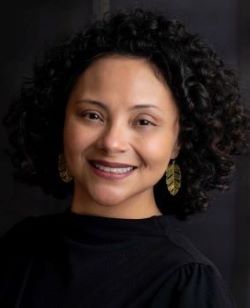Enter your email to receive the CareQuest newsletter:
October 10, 2024
It’s essential to meet patients where they are — whether that means bringing a mobile clinic to their school or making an effort to understand their language.
That was one theme from a recent webinar, “Advancing Equity in Hispanic and Latino Communities: Strategies to Integrate Compassionate Care,” from CareQuest Institute and the Hispanic Dental Association (HDA). The webinar, which drew nearly 500 learners, covered innovative approaches to serving Latino and Hispanic populations, leadership development within these communities, and the importance of cultural humility.

Moderated by Cristina Godoy, DDS, MPH, CCRP, interim dean of research, Nova Southeastern University, the webinar featured Carlos Sanchez, RDH, BSDH, MPH, clinical associate professor, Dentistry School Herman Ostrow School of Dentistry of University of Southern California, and Esther Lopez, DDS, MPH, Healthy Tooth Dental, adjunct professor, UIC - College of Dentistry and lead dentist, RefugeeOne.
Their presentations were followed by a vibrant Q&A session, highlighted by seven thought-provoking questions summarized below. (Note: You can view the full webinar, including the Q&A, in the CareQuest Institute webinar library.)
1. From the perspective of a dental school, what’s the best way to start a mobile dentistry program?
First, you need to research state laws to determine what is permitted in your state. It’s important to know your scope of practice. In California, for example, the scope of practice for a registered dental hygienist (RDH) is somewhat broader than in many other states — a policy that was intended to facilitate providing care in rural and underserved areas.

It’s helpful to partner with like-minded individuals. If you are in a school environment, talk to faculty members and administrators to gauge interest in starting a mobile clinic. You might emphasize that it’s a valuable resource for students in dental programs. Raising funds might be necessary, too.
2. How do you do that? How do you raise funding for mobile dental clinics and identify community partners?
The program I [Professor Sanchez] help run at USC is grant funded, and the program partners with the Los Angeles Unified School District. Schools can make excellent partners, and they are a great place to reach young people in need of dental care.
Finding funding sources can be a challenge. You will need to search widely for grants that might be available. Wealthy individuals sometimes wish to donate. And churches and nonprofit organizations are other possibilities as community partners.
3. Some mobile providers don’t feel they have the full support of local dentists. Any recommendations to improve those relationships?
Some dentists might feel competitive with mobile clinics, as though they pose a threat. But in reality, there’s room for both to coexist. For the most part, the mobile clinics reach patients who would not otherwise receive oral health care. It can help to reach out to dentists in the community and educate them on the role of the mobile clinics.

4. Do you think school-based programs or the mobile clinics can become a new career path for younger dentists?
Working at the mobile clinics can be extremely fulfilling. It’s not for everyone, but it provides an opportunity to make a positive difference in people’s lives. It falls under the bigger umbrella of public health and community-based dentistry.
5. How do you navigate different Spanish dialects? Some words have different meanings in different countries.
Start with establishing a trusting relationship. If you use a word in a way that’s “incorrect” in their dialect, patients will know that your intentions are good. Treat the differences as an opportunity to learn. See your patients as your teachers. It’s empowering to them to be able to impart knowledge.
6. In some programs, such as school-based sealant programs, we see low consent rates for Latino parents. What is the best way to communicate the safety and efficacy of the programs?
Among disenfranchised communities, distrust of official channels is common. An additional factor may be immigration status, which can affect people’s comfort levels with any programs that require paperwork.
By and large, the preferred method for learning new information is word of mouth — hearing from neighbors, aunts, and other trusted sources. Try to reach people through these informal channels.
One option is to hold a town hall meeting, recruiting someone from the community to explain so it’s a little less scary and they understand the process.
7. How can a foreign-trained dentist be of help to the HDA?
The HDA has amazing international dentists as members. They recently held a panel discussion with international dentists who discussed their career paths. One student focused exclusively on a platform where they discuss how to get into dental school.
Foreign-trained dentists can start by contacting HDA to learn more about the community leadership fellowship program, which gives them the opportunity to explore different ways of practicing.
Editor’s Note: Watch the full webinar and access presenter slides in the CareQuest Institute webinar library.